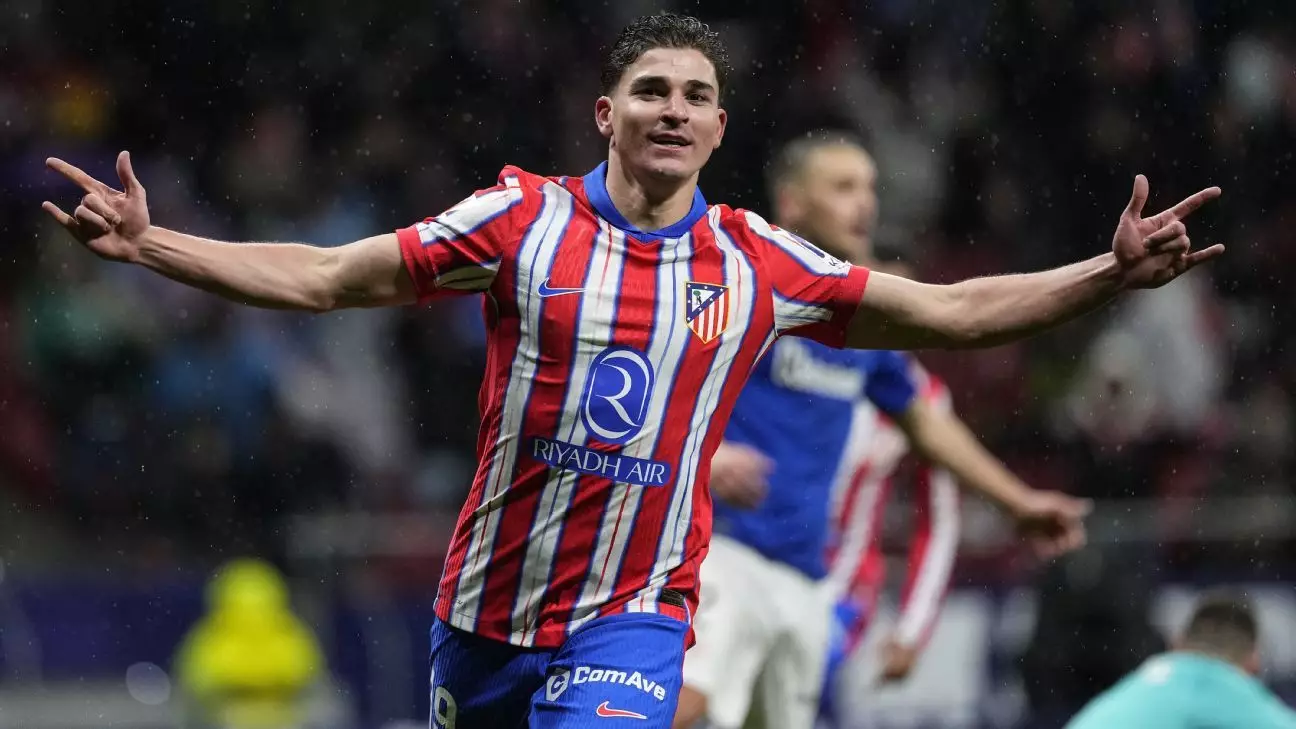As the football transfer market heats up, FC Barcelona is eyeing Julián Álvarez of Atlético Madrid as the replacement for the legendary Robert Lewandowski. With Lewandowski now in the twilight of his career at age 36, the club recognizes the urgent need for a strategic plan to secure a future star. Álvarez, who moved to Atletico a mere season ago from Manchester City, has been nothing short of exceptional, ramming home 27 goals this season in various competitions. Reports from Marca indicate that his signature may become a key bargaining chip in the upcoming Barcelona presidential elections.
However, this scenario is steeped in complexities. First and foremost, Atlético Madrid is unlikely to easily let go of their leading light. Not only is Álvarez the focal point of Diego Simeone’s attacking strategy, but he has also developed a strong emotional connection to the club. For his part, Álvarez was an admirer of Simeone well before donning the red and white jersey. Therefore, one must question the feasibility of this transfer—could Barcelona really persuade Atlético to relinquish such a talent?
Saudi Movement: The Onana Situation
Meanwhile, in a different part of Europe, Manchester United goalkeeper André Onana is apparently on the radar of Neom, a Saudi football club vying to make big waves if they secure promotion to the Saudi Pro League. The discussions are ongoing, and speculation suggests that Onana is open to a move away from European football, despite his notoriety and success on that stage. If the deal materializes, it would not only allow Onana a lucrative payday but also represent a growing trend of talent migrating to the Middle East.
Onana’s interest in leaving raises pressing questions about the allure of traditional European football versus the new financial powerhouses emerging in regions like Saudi Arabia. The world of football is witnessing a fascinating transformation, with clubs from countries previously considered outsiders now showcasing their ambition to compete at the highest levels. If a deal is struck, it might just serve as a wake-up call to clubs across Europe regarding the threats posed by the rise of these financially empowered teams.
Crystal Palace’s Rising Stars
Amidst this transfer buzz, the young talent at Crystal Palace is attracting the attention of several Premier League opponents. Defenders Marc Guéhi and midfielder Adam Wharton are reportedly on the shopping lists of clubs like Tottenham Hotspur, Chelsea, and Newcastle United. Guéhi, who has delivered exemplary performances, particularly in a recent FA Cup semi-final win, is a target many clubs covet. Wharton, meanwhile, ignites interest as a promising midfielder, although he requires reassurance regarding game time amid serious World Cup ambitions.
In the case of each player, the looming presence of free agency in 2026 puts pressure on Crystal Palace either to capitalize on incoming offers imminently or risk losing them for nothing. This is an intriguing subplot illustrating how small to mid-tier clubs operate in a league dominated by financial giants. The ability to develop talent and retain them becomes paramount, yet the allure of bigger clubs and larger paychecks is ever potent.
The Balancing Act of Atlético Madrid’s Ambitions
Turning back to Atlético Madrid, the club is also eyeing significant transfer targets for this summer, namely Tottenham’s Cristian Romero and Villarreal’s Álex Baena. However, reports suggest that managing a budget surpassing €100 million for these players presents a substantial obstacle. In a footballing world increasingly defined by lavish spending, Atlético’s struggle to balance ambition and budget constraints underscores the challenges many clubs face.
Moreover, back-up goalkeeper and defensive midfielder positions are gaining urgency in Atlético’s summer strategy, creating a multi-faceted dilemma for the club’s recruitment teams. With their focus on a young, dynamic squad, Atlético aims for sustained success but must navigate financial limitations deftly, an increasingly common narrative in modern football.
Player Loyalty Versus Dollar Signs
The overarching theme throughout this transfer window is the clash between player loyalty and financial lure. Clubs are now faced with the ever-growing financial power of foreign leagues, making it increasingly challenging to retain homegrown talent or established stars. As players like Onana contemplate moves, and talents like Álvarez are thrust into political machinations, the fabric of football continues to evolve beyond the mere love of the game.
Will clubs find a way to maintain their core identities, or will they ultimately succumb to the bright lights and bigger bank accounts? Only time will tell, as the current transfer saga unfolds with twists and turns that could dramatically reshape the landscape of European football. The impending summer transfer window is bound to offer surprises, dilemmas, and perhaps, a reawakening of traditional loyalties versus modern necessities in football.

